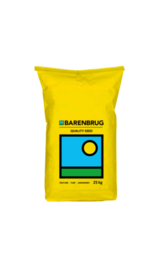Highly Winter Active Lucerne
Highly winter active varieties are bred for late autumn/early winter planting and have excellent seedling vigour for oversowing. They have a more upright crown, erect growth habit and are well suited to a 2 - 4 year rotation system in 300 - 500 mm rainfall zones under permanent irrigation. They provide maximum growth from winter dominant growing season rainfall. Some of the newer Australian-bred varieties in this group have increased grazing tolerance because they were selected from and developed for broadacre grazing systems.
BarALFA 10
Perfectly suited to cut and carry operations, BarALFA 10 is a high performing, highly winter active variety bred from elite parent material from Australia and the USA. It demonstrates extremely fast establishment and will provide high year round forage yield, which means it can be adapted to various farming systems that demand high performance products.
Key features
• High yield potential, exceptional trial results in Australian, US and South African trials
• Bred for improved persistence and productivity over traditional dormancy 10 varieties
• Good all round pest and disease resistance / tolerance
• Very high yielding in desert environments
• Superior establishment and reduced time to first cut compared to CUF 101 and Siriver
• BarALFA 10 35% higher first cut increase over CUF 101 and Siriver in US trial results
Agronomy and management
It is important that alfalfa seedlings are given adequate time to establish prior to the first cut or grazing. Failure to do so can result in reduced plant numbers and hence plant density and the quality of the overall stand reduces. The first cut / graze should occur when the plants have an established root system and height around 5 –10 cm. This may take 6 – 8 weeks depending on growing conditions. After the initial cut / graze it is important that the stand be given adequate time to regrow before going through the process again. This is normally around 4–6 weeks, care should be taken to avoid over stocking.
Trial results
BarALFA has performed well in various trials thus far. Ongoing work is being conducted to assess its long-term performance.
Water: 350mm+ or irrigation
pH: 5.0 – 8.0
Soil: Deep well drained




